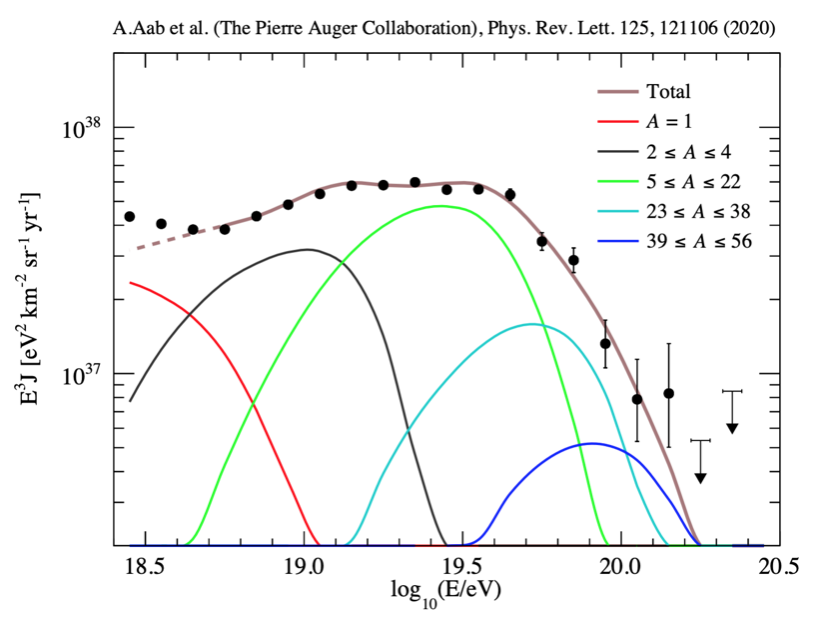The quest for the sources of very high energy cosmic rays (UHECR), higher than 1018 eV, and the study of their acceleration mechanisms, is one of the open questions in astrophysics. The measurement of the energy spectrum of UHECRs, combined with that of mass composition and anisotropies in their arrival directions, is one of the information necessary to understand their origin. The Pierre Auger Observatory (located in Malargüe, Argentina – www.auger.org) is the largest and complex experiment for the study of this energy range, based on a hybrid technique that takes advantage of the simultaneous measurement of charged particles on the ground over an area of 3000 km2 and of the light emitted in the atmosphere thanks to fluorescence telescopes.
The scientific collaboration of the Pierre Auger Observatory has measured, with an accuracy never obtained before, the energy spectrum of the cosmic rays from 2.5 . 1018 eV up to the most extreme energies. The characteristics observed in the spectrum can be reproduced in astrophysical models in which the composition of the nuclei at the source varies as energy grows; the measured nuclei can be produced in sources such as Starburst Galaxies and AGN, in accordance with the recent indications of anisotropy obtained with Auger.
These results have been obtained with the direct contribution of the Auger group of INAF-OATo, with Dr. Antonella Castellina (co-spokesperson of the experiment), Dr. Marco Aglietta (responsible for the detectors of the surface apparatus), Dr. Francesco Fenu (young fellow and co-head of the spectrum analysis group).
Related links:
The results were published in two articles on Physical Review D and Physical Review Letters, selected in the Highlights of the American Physical Society (APS), entitled
- Features of the energy spectrum of cosmic rays above 2.5 x 1018 eV using the Pierre Auger Observatory
The Pierre Auger Collaboration, Phys. Rev. Lett. 125, 121106 (2020)
[arxiv.org/abs/2008.06488] [doi: 10.1103/PhysRevLett.125.121106] - Measurement of the cosmic ray energy spectrum above 2.5 x 1018 eV using the Pierre Auger Observatory
The Pierre Auger Collaboration, Phys. Rev. D 102, 062005 (2020)
[arxiv.org/abs/2008.06486] [doi: 10.1103/PhysRevD.102.062005]

